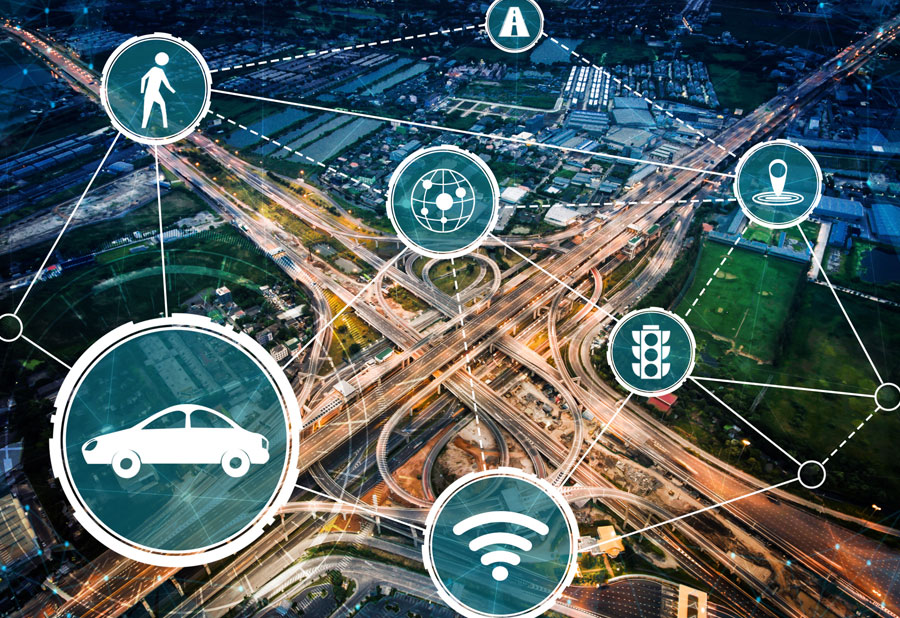Sustainable mobility has become a priority for governments and businesses globally. The need to reduce greenhouse gas emissions, improve air quality and reduce dependence on fossil fuels has led to the promotion of cleaner and more efficient transportation solutions. In this sense, collaboration between companies and governments is essential to drive and accelerate the transition to a sustainable mobility system.
Public-private collaboration involves the pooling of efforts and resources between these sectors to develop and implement cutting-edge solutions that reduce the environmental impact of transportation. This cooperation seeks to leverage the strengths and capabilities of each sector, combining government expertise and resources with the agility and investment capacity of companies.
However, sustainable mobility is not only limited to the adoption of electric vehicles, but also encompasses areas such as efficient public transport, the promotion of active transport modes such as cycling and shared mobility. To achieve real and lasting change, a comprehensive approach is needed that addresses both transport infrastructure and individual and collective behaviors.
Successful models of public-private collaboration
Public-private collaboration in promoting sustainable mobility has proven effective in several places around the world where successful models have highlighted the importance of working together to develop solutions and overcome the challenges associated with the transition to a more sustainable transportation system.
A prominent example is the Copenhagen Connecting program in Denmark, where the local government and technology companies cooperated to implement smart transportation solutions. This included integrating data from different sources, such as public transport, bike sharing and parking, into a centralized platform that facilitates route planning and informed decision-making by citizens. Thanks to this project, better coordination of transport modes was achieved, leading to a reduction in traffic congestion and an improvement in the efficiency of the city’s transport system.
Another successful model is the E-Mobility Partnership program in Germany, where federal and state governments partnered with automakers and charging service providers to drive electric vehicle adoption and establish a robust charging infrastructure across the country. The public-private partnership was instrumental in overcoming initial barriers, such as the lack of charging points, and promoting consumer acceptance of electric vehicles. Following this partnership, Germany was able to significantly increase the number of charging points and the use of electric vehicles in the country.
Do you want to know more about Mobility and Sustainability?
Barriers and facilitators to collaboration
Although public-private collaboration can be beneficial, there are also challenges and barriers to its implementation. One of the most common is the lack of alignment of interests and objectives among the different actors involved, which makes it difficult to create a shared vision and make joint decisions.
In addition, the lack of clear and stable regulatory frameworks can be a significant obstacle. Businesses need certainty and an enabling environment to invest in long-term sustainable mobility solutions and, as such, governments play a crucial role in establishing consistent regulations and policies that encourage innovation and the adoption of clean technologies.
To overcome these barriers, it is essential to have the right facilitators who are committed to transparency and open communication in order to build trust and find joint solutions. Collaboration between business and government can also be beneficial in leveraging the expertise and resources of both sectors to overcome both technical and financial hurdles.
The role of Public Administrations
Public administrations, as government entities, have the power to establish policies, regulations and legal frameworks that encourage the adoption of sustainable solutions in the transportation sector. This could include actions such as implementing stricter vehicle emissions policies and regulations, energy efficiency standards and safety requirements, which would incentivize companies to develop cleaner technologies and solutions.
On the other hand, they can encourage the development of sustainable infrastructure such as efficient public transport networks, implementation of charging systems for electric vehicles, and the creation of pathways for active modes of transport such as bicycle lanes or sidewalks. Also, more efficient urban planning in the use of space (residential, commercial and services) and the creation of neighborhoods that facilitate citizens’ mobility, reduce traffic congestion and improve the quality of life in cities.
Similarly, they can help to change the vision and habits of citizens in relation to transportation by creating awareness campaigns that promote responsible behavior. This would be a way to generate more citizen support and participation in the transition.
Public administrations play an important role in the creation of alliances and collaboration between companies. They can act as neutral mediators between the different entities involved in the process, promote participation and facilitate the exchange of knowledge and best practices.
The role of companies
Companies have the ability to drive technological innovation in the field of sustainable mobility. This involves not only the development of cleaner and more efficient vehicles, such as electric and plug-in hybrids, but also a vital role in creating the infrastructure needed to support these advances. In addition to investing in research and development of emerging technologies, such as autonomous driving and artificial intelligence, with the aim of improving efficiency and safety in transportation.
In the case of electric vehicles, for example, companies play an important role in the development of charging infrastructures. This involves installing charging points at their facilities, parking lots or service stations to facilitate the transition to broader electric mobility. In addition, they can participate in public-private partnerships to develop joint projects, share resources and address common challenges. These collaborations, as discussed above, can promote the exchange of best practices and experiences, thus accelerating the transition to sustainable mobility.
Importantly, companies must also take responsibility for minimizing their own environmental footprint in the area of mobility. This involves implementing sustainable business practices, such as optimizing fleet management, reducing carbon emissions and adopting flexible mobility policies, such as teleworking and implementing flexible schedules. They can also promote sustainable mobility solutions among their customers and employees through incentives that encourage the use of public transportation, such as fare discounts or transportation reimbursement programs, or facilitate ridesharing options, such as carpooling or bike-sharing, to reduce traffic congestion and greenhouse gas emissions.
Successful models of collaboration between business and government in promoting sustainable mobility have shown that this partnership can generate positive results and accelerate the adoption of solutions in the transportation sector. While there are also barriers to overcome, it is important that government and business can work together to build a more sustainable and environmentally friendly mobility future.






